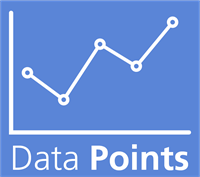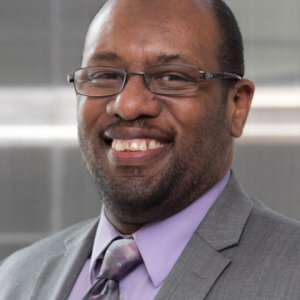Data Points | Black Students Declining at Chicago’s Top Public High Schools and in CPS Overall

Not everyone is going back to school in Chicago, especially at the city’s elite public high schools

About 380,000 Chicago public school students will return to classes next week. They are likely to include a diminishing crop of African-American students, most notably at the city’s most prestigious public high schools, shows a Metropolitan Planning Council analysis of Chicago Public Schools data.
The number of African-American students in CPS has declined each year since at least 1998, the earliest year for which demographic data are available on the district’s website. In addition, black students have now fallen to the bottom among the largest four racial and ethnic groups at the city’s top five selective-enrollment high schools. And the disparity between the percentages of white and black CPS high school students attending those schools is at an all-time high.
The reasons for these trends aren’t entirely clear, but they are indicative of broad challenges related to growth, economics and segregation facing Chicago and its public schools, particularly in African-American communities on the city’s south and west sides.
The steady decline of black enrollment at CPS suggests that education concerns might be a factor in the continuing saga of black population loss in Chicago. And the shrinking share of black students at the city’s top high schools may illustrate that among those concerns is the lack of high-quality options for black students in CPS.
The widening gap between black and white students at the city’s elite high schools also emphasizes Chicago’s need for greater equity in public education—one of several public policy areas in which MPC is seeking strategies as a part of its Cost of Segregation project. MPC is working with numerous stakeholders and policy experts to release such recommendations in 2018 aimed at increasing equity and decreasing segregation.
Jones College Prep, Lane Tech, Northside College Prep, Payton College Prep, and Whitney Young Magnet high schools are routinely ranked by U.S. News & World Report, Niche and other websites as the top five public high schools in Chicago, among the top 10 in Illinois and among the top 200 in the nation. In its most recent rankings, Niche rated Payton and Northside as the top two public high schools in the U.S.
In 2016-2017, collectively, the share of black students at those schools dropped to its lowest point since 2000, the earliest year in which all five schools have been in operation. While African Americans comprised almost 40 percent of all high school students in CPS last school year, they made up just 13 percent collectively at those five high schools. It marked the first time that African Americans ranked last in combined enrollment at those schools among the city’s four largest racial and ethnic groups, which also include Asians, Latinos and whites.
As the share of black students at the top five CPS high schools has declined, the share of white students in those schools has increased. While white students were just 8 percent of all CPS high school students last year, they accounted for nearly 35 percent of students at the city’s top five public high schools—the highest share among all racial or ethnic groups, followed by Latinos at 33 percent and Asians at 14 percent.
White high school students in CPS are 13 times more likely than their black peers to attend one of the city’s elite public high schools—the widest disparity at any point since all five schools have been in operation. About 39 percent of all white high school students in CPS last year were enrolled in one of those top schools compared with just 3 percent of all black CPS high school students.
In 2016-2017, the percentages of black students at four of those top five high schools reached their lowest points since 2000.
Black students outnumbered all other groups at Jones College Prep during the 2001-2002 school year when they made up 41 percent of the school’s population. However, black representation at Jones was just 15 percent last school year. At Lane Tech, black students were just 8 percent of the student body last year down from 16 percent in the 2004-2005 school year.
Black students were the largest group at Payton College Prep in each of its first two years in existence, comprising 34 percent of all students during both the 2000-2001 and 2001-2002 school years. But in 2016-2017, black students were less than 13 percent of the student body at Payton.
Black students were also the largest group at Whitney Young Magnet in 2000-2001, when there were 895 African Americans at the school comprising 41 percent of its student body. In 2016-2017, black students were the third largest group comprising less than 23 percent of all students at Whitney Young.
African Americans are finding other selective-enrollment options. In sharp contrast to the declining numbers of black students at the top five CPS high schools, black students collectively represented 75 percent of students at five other selective-enrollment high schools located in majority-black community areas on the city’s south and west sides. Black students are the majority at each of those five schools, which include Brooks, King, South Shore International and Westinghouse college prep high schools as well as Linblom Math and Science Academy.
In all, there are 11 selective-enrollment high schools in Chicago. Hancock College Prep High School is 95 percent Latino and located on the southwest side in the majority-Latino West Elsdon community.
While the five majority-black, selective-enrollment schools aren’t rated as high as those top five CPS high schools, some are listed among the nation’s best 2,000 public high schools. In the latest Niche rankings, out of nearly 18,000 public high schools nationwide, Payton, Northside, Whitney Young, Jones and Lane ranked first, second, sixth, 32nd and 43rd, respectively. Lindblom, Westinghouse and Brooks ranked 388th, 1,253rd, and 1,645th, respectively, still among the top 10 percent of the nation’s public high schools.
Even with strong numbers at other selective-enrollment options, the vast majority of African Americans in CPS are attending high schools far from the top 10 percent of public high schools nationwide. For instance, in 2016-2017, more than 77 percent of black CPS high school students attended schools where the average composite ACT score for African Americans in 2016 was below the 18.4 citywide average, according to MPC’s analysis of CPS data.
